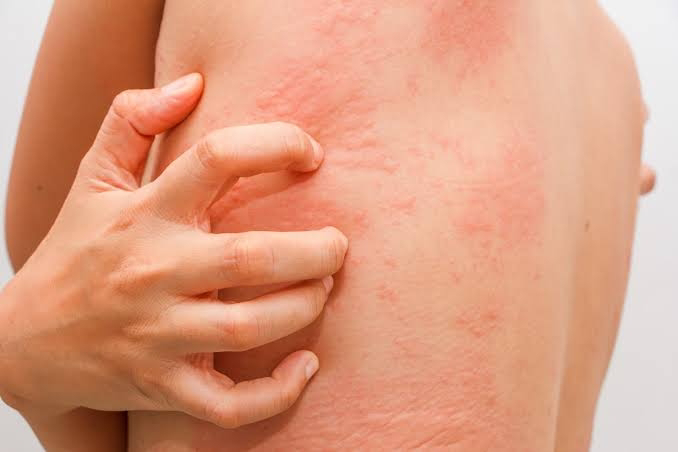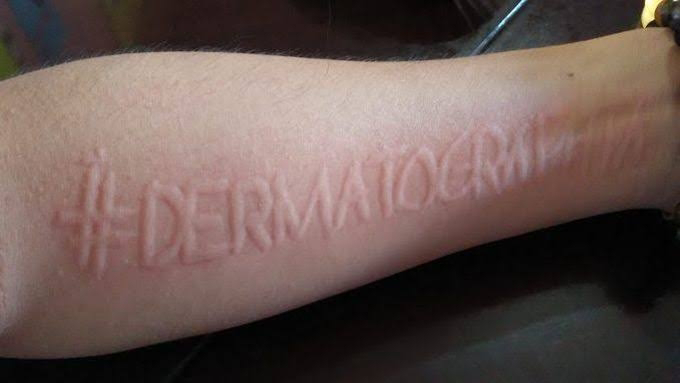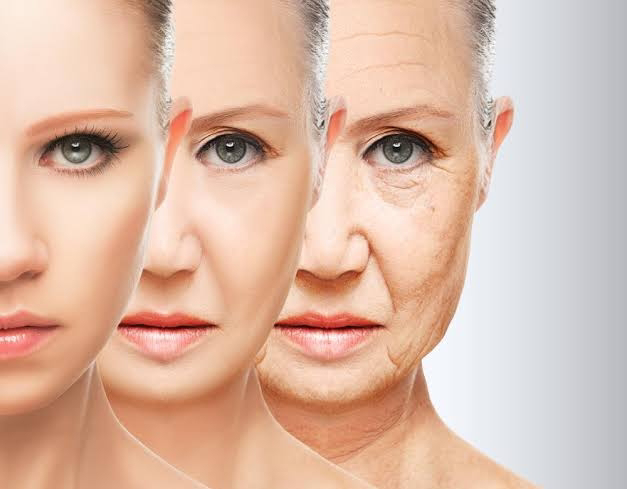All You Want to Know About Hives - Urticaria
• What is Urticaria?
• How can one get Urticaria ?
• What are the types of Urticaria?
• How does Urticaria look? Can Urticaria spread to other part of the body?
• What should one do if one develops hives?
• Are there any tests to confirm Urticaria?
• How can Urticaria be treated?
• Which is the best antihistaminic to treat Urticaria and for how long?
• What is the course of Urticaria? Can it recur?
• What are the important aspects to know about Urticaria?
1. What is Urticaria?
•Urticaria" or "hives" are short-lasting raised areas of the skin that itch intensely and are red in colour.
• It is a very common condition and about 20 percent of people develop hives at some point of time during their lives.
2. How can one get Urticaria?
• Urticaria is caused by release of a chemical called histamine that results in itching, redness, and swelling of the skin.In most cases, the lesions appear suddenly and disappear within several hours.
• If the disease lasts less than 6 weeks; it is called acute urticaria, and causes like infections (usually upper respiratory tract infections), food allergy and drug allergy may be responsible.
• If it lasts for more than 6 weeks, it is called chronic urticaria. This variety of urticaria has causes other than the ones mentioned for acute Urticaria (can be physical or spontaneous).
• Many a times, a cause for Urticaria cannot be identified even after extensive investigations.
3. What are the types of Urticaria?
• Urticaria can be acute or chronic (physical or spontaneous). But when you first get Urticaria, you cannot tell how long this will last, and so, you cannot tell if you have acute or chronic Urticaria.
• Although all types of Urticarial lesions look similar, they often have different triggers. Identifying what triggers your Urticaria can help you to avoid the trigger.
Acute Urticaria:
• Hives will not last beyond a maximum of 6 weeks. Individual lesions generally disappear within 24 hours while new ones may keep coming up.
• Triggers of acute hives include infections, drugs, insect stings (bees, wasps, ants), food allergies and physical contact with certain agents.
• Food-associated Urticaria appears within 30 minutes of eating the food and the foods most likely to cause it include milk, eggs, peanuts, other nuts, soy, wheat, fish and shellfish. Physical contact with plants, raw fruits, vegetables, and latex can cause Urticaria in certain individuals.
• The list is not all inclusive.
Chronic Urticaria:
• Hives occur almost daily and last longer than six weeks, sometimes for years. In chronic Urticaria also, the individual lesions generally disappear within 24 hours while new ones may keep coming up.
• These hives come and go and can interfere with sleep, work, or school.
• In most cases of chronic hives, the cause is unknown. Problems in the immune system may play a role. It can be a sign of medical or autoimmune conditions, including thyroid or liver diseases, chronic infections, allergic conditions like allergic rhinitis, asthma; or lupus.
•The list of causes is not all inclusive. Often a cause may not be identified.
• Food-additives like colorants, preservatives and essence and some pain-killers are important triggers of both acute and chronic Urticaria.
Physical or Inducible Urticaria:
• This is a special subtype of chronic Urticaria where hives can be triggered by physical factors like exposure to cold, changes in temperature or sweating, vibration, pressure, exercise, sunlight or water, etc.
• Dermographism is a type of physical, inducible Urticaria in which red, raised lines develop if the skin is stroked firmly or scratched. Physical forms of hives tend to be long lasting.
4. How does Urticaria look? Can Urticaria spread from one to other parts of the body?
• Urticaria are raised red areas that itch intensely. These raised areas may enlarge and merge together.
• Itching is the most bothersome symptom. Rarely; pain, purple spots, raised lesions along with fever and joint pains can occur.
• Urticaria can affect any areas of the body, especially the trunk, thighs, upper arms and face. • Most individual lesions fade quickly, but new crops may appear every 24 to 72 hours if the person continues to be exposed to the environment or substance that triggered the hives.
• In up to one-half of people with Urticaria, a condition called angioedema also develops. Angioedema causes puffiness of the face, lips, tongue, eyelids, ears, hands, feet, and genitalia. It may be associated with pain.
• Hives can also occur as part of a serious allergic reaction. It can be associated with breathlessness, tightness in the throat, nausea, vomiting, cramping abdominal pain and giddiness. If these symptoms occur, get immediate medical attention. You could be developing anaphylaxis, a life-threatening condition.
5. What should one do if one develops hives?
• Recognizing and avoiding the trigger, if identified, is the most important step.
• In mild cases, consult a physician; an antihistamine tablet will provide relief.
• In recurrent episodes, or chronic cases, consult a dermatologist.
• Consult a skin specialist (Dermatologist) or go to a hospital immediately if one experiences angioedema as described above or breathlessness, tightness in the throat, nausea, vomiting, cramping abdominal pain and giddiness.
6. Are there any tests to confirm Urticaria?
• Most people with Urticaria do not need any tests. The diagnosis is usually based on the history and appearance of skin lesions.
• However, tests may be recommended if lesions do not resolve within six weeks.
• Skin tests for food and drug sensitivities may be done for people with acute urticaria but may not yield satisfactory results, as it is impossible to test for all food allergens and also to avoid them altogether. However, avoidance of the culprit food items is of paramount importance in people who have experienced anaphylaxis.
• Blood tests are done if Urticaria continues for more than 6 weeks, to check for underlying diseases, such as liver or thyroid problems or an autoimmune disease.
• A skin biopsy may help identify uncommon causes of Urticaria (in case of persistent fever, painful hives, individual hives that last for days at a time, hives associated with bruising of the skin or abnormal blood tests).
7. How can Urticaria be treated?
• Urticaria is treated with a combination of avoiding things that cause or worsen the hives and certain medications.
• The first treatment for acute Urticaria is to figure out what is triggering it and then avoid that trigger. Even if you cannot figure out the trigger, Urticaria usually disappears over a few days or weeks.
• Antihistamines are the mainstay medicines for Urticaria that can relieve itching and most people respond to antihistamines.
8. What is the course of Urticaria? Can it recur?
• Hives usually respond well to treatment-with medicines and avoidance of triggering factors.
• Most simple cases of Urticaria fade quickly, and the affected skin returns to normal within hours.
9. What are the important aspects to know about Urticaria?
• Urticaria is not contagious
• They are rarely permanent; almost 50 percent of people are free of lesions within one year.
• Chronic Urticaria is rarely caused by allergies and is not life threatening.
• It is treatable in most people and may need few months to a few years of long-term antihistamine therapy. They are very safe when taken under supervision.









Comments
Post a Comment